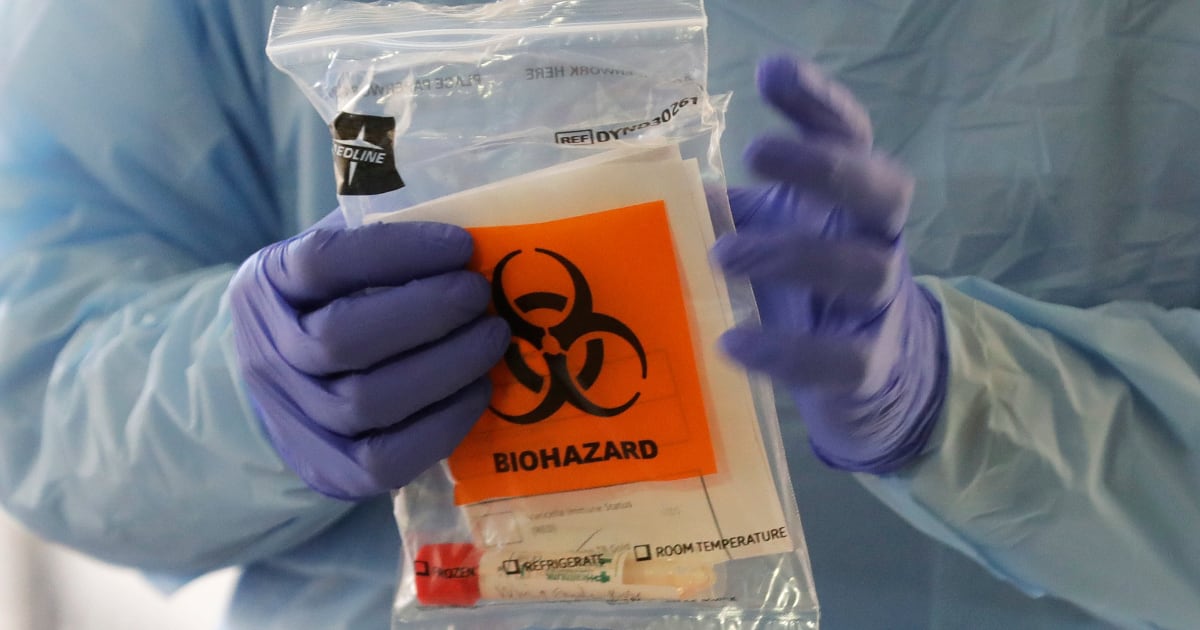In the wake of the global coronavirus pandemic, the Navy’s top officer and his most senior enlisted adviser took to social media and official online sites Saturday to calm the fleet and explain the unprecedented orders they’re instituting to help stop the spread of COVID-19.
The brief message — 74 seconds — addressed sweeping changes in how personnel and their families will travel and work over the next 60 days, including the suspension of official, personal and PCS travel inside the continental United States and to designated locations worldwide where the disease is entrenched in local populations; plus "flexible work schedules and the use of telework.
“Our understanding of the coronavirus is rapidly evolving, and we may have to implement further measures to combat the spread of this virus,” warned Chief of Naval Operations Adm. Michael Gilday.
“America depends upon us to help provide security and stability to this nation, and that’s exactly what we will continue to do.”
Master Chief Petty Officer of the Navy Russell Smith urged commands to keep an eye on sailors and follow the guidelines of health authorities, including frequently washing hands, avoiding public gatherings and avoiding contact with others if you become ill.
“Don’t be a hero,” he added.
As of Friday, the Centers for Disease Control and Prevention reported 1,629 confirmed or presumptive cases of COVID-19 in 46 states and Washington, D.C.
Health authorities have confirmed at least 41 deaths.
Their message arrived hours after a late Friday mandate from the Pentagon issued a nearly total domestic travel ban for all troops, civilian personnel and their families until May 11 in an effort to limit their potential exposure to the coronavirus.
Defense Department officials also provided a five-page document that attempts to explain how the order will be implemented across a force that includes active duty, reserve, National Guard personnel, civilian employees and their families.
Navy Times has forwarded a list of specific questions from sailors and their families fired at the news outlet in the aftermath of the Pentagon’s announcement, but some broad answers are available already.
For example, the travel ban is intended to apply to all Defense Department service members, civilian employees and their families from March 16 through May 11, but it carves out exceptions for “compelling cases" where travel is necessary, such as for personnel deemed to be “mission essential,” for humanitarian reasons or warranted “due to extreme hardship.”
Although leave is now being restricted for most personnel to local areas, the same exemptions will apply to those who need to travel farther away.
As a general rule, all family members of military and essential civilian employees will have international travel deferred for 60 days.
For those seeking concurrent travel, no families will be allowed to accompany their sponsors overseas for 60 days, although they also can apply for the three types of waivers.
Those who already have begun their travel are allowed to continue to their final destinations. Those whose TDY ends within the stop movement period can return home but should follow health protection policies including frequently washing their hands and keeping a distance from potentially infected people.
The domestic travel ban does not apply to those who must seek medical treatment.
The travel ban does not apply to personnel nearing the end of their active duty service commitments or retirement dates.
RELATED

For personnel returning from countries where there have been widespread outbreaks of COVID-19 such as Italy, there are no designated quarantine quarters.
Parent commands have been directed to order affected service members to stay at home or other appropriate domiciles for 14 days while personnel conduct self-monitoring for signs of coronavirus infection.
For the many personnel who have surrendered their household goods to shippers but haven’t departed their locations, the Pentagon urges you to contact your shipping office immediately to see if your goods are still in the local area and whether you can gain access to them.
To find out of a stop movement order applies to you or to check on the status of a waiver to travel, contact your chain of command.
Once armed with that information, sailors should contact their Vehicle Processing Center to determine if they can retrieve their privately owned vehicles or schedule when to drop off POVs.
For those who have ended leases within 30 days of an anticipated move, the Pentagon asks that you immediately contact your chain of command for assistance.
For any other questions, military leaders want you to ask your chain of command for guidance.
RELATED

Prine came to Navy Times after stints at the San Diego Union-Tribune and Pittsburgh Tribune-Review. He served in the Marine Corps and the Pennsylvania Army National Guard. His awards include the Joseph Galloway Award for Distinguished Reporting on the military, a first prize from Investigative Reporters & Editors and the Combat Infantryman Badge.
